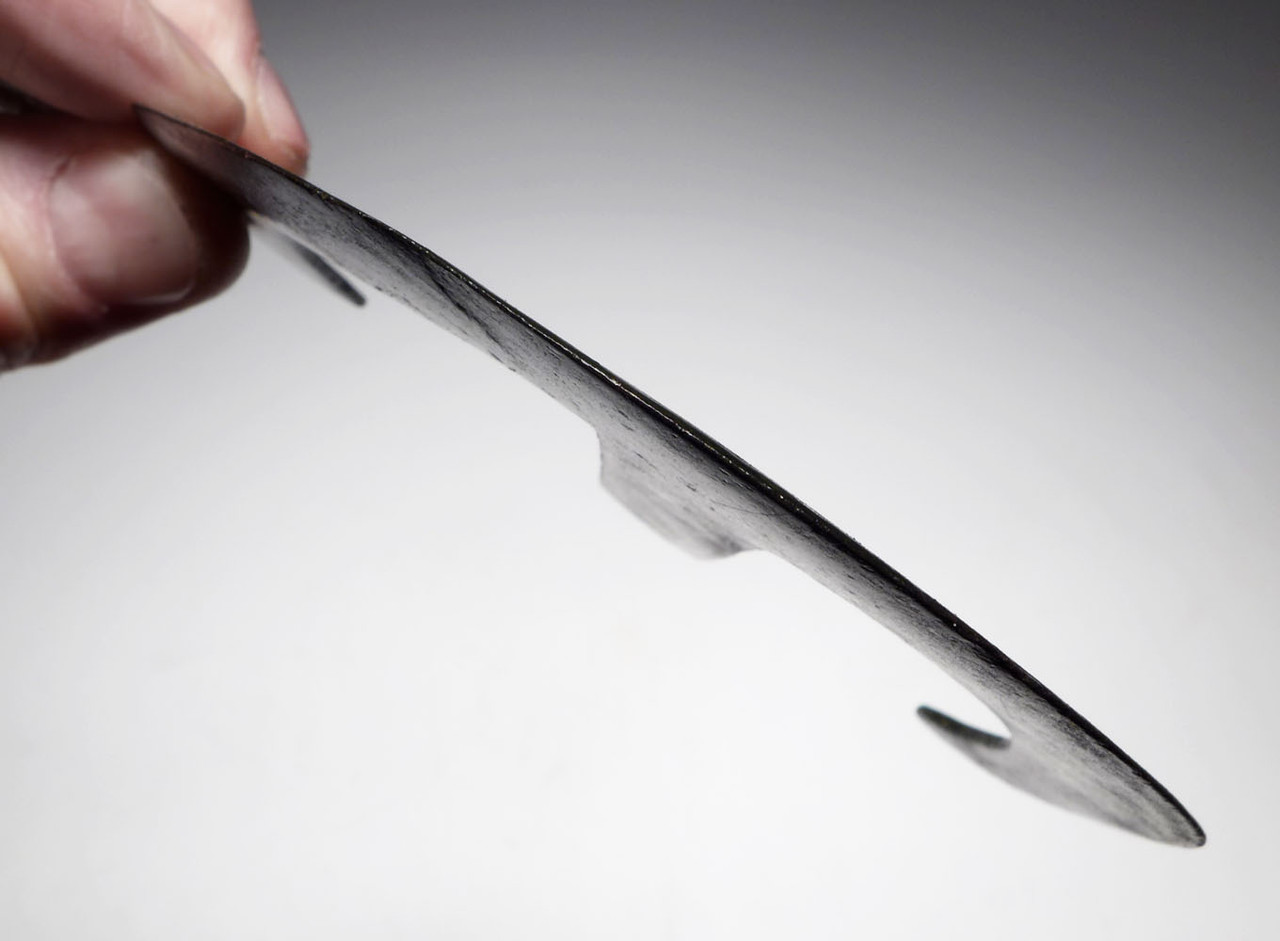Product Description
The scarcity of ancient Egyptian metal weapons on the market demonstrates their sheer rarity. Even in museum collections, only very seldom will you see any bronze or copper alloy weapons on display as they are among some of the rarest ancient objects of that culture. This is one of only TWO times we have ever been fortunate enough to secure an Egyptian epsilon axe in the last 24 years.
The epsilon axe is an ancient and early form of combat axe so named for its resemblance to the Greek letter epsilon (ϵ). This remarkable primary weapon is an early ancient Egyptian EPSILON axe made of copper alloy bronze. Axes like these can be seen in hieroglyphics and were dated to the Middle Kingdom. A front-line warrior equipped with a weapon as large as this would have not only made an extremely intimidating appearance, the broad curved cutting blade could have easily inflicted fatal wounds to an unfortunate foe.
This example is a rare early form with a central tang pierced to attach to a wooden shaft handle while the other upper and lower blade tangs would have simply been embedded and lashed to the handle. Because of their thinness and design, many of these axes are found in poor preservation with losses to the edges and corrosion from bronze disease (VERY SERIOUS!). This exceptional example shows still sharp edges with the finest green malachite encrustation patina. The entire axe is complete with perfect preservation (no corrosion or bronze disease), no damage (modern or ancient), and no alterations.
The epsilon axe is seen in Egyptian hieroglyphics with the warrior carrying an axe in one hand and a shield in the other, thus offering a glimpse of how these weapons were employed. The style of this specific example most resembles the simplistic and early forms of this axe seen in those ancient Egyptian stone carvings. Some Assyrian bronze examples are in the collection of the British Museum. As body armor increased in use and strength, the epsilon axes would later prove less effective than the spike-headed armor-piercing axes that later replaced them.
This artifact has been professionally cleaned and conserved in our lab, being treated with a special sealer developed and formulated by us specifically for ancient metal preservation. The patina shows beautiful traits only found in authentic ancient weapons. It is a patina like this that the finest ancient bronzes are prized for and it is a patina like this that brings a premium in price and value of the specimen. There is no active bronze disease. Bronze disease forms a corrosive powder that will literally eat away an artifact over time and destroy it.
WARNING: There is a STAGGERING number of fake bronze weapons on the market. Many being sold as "authentic" were never meant to deceive and were made as far back as 100 years ago as exact reproductions for museums to sell in their gift shops. Other examples are modern fabrications specifically intended to fool unwitting buyers. As fine quality intact, original specimens become more scarce, the techniques to fake these objects have become highly advanced. We have personally handled numerous well-done fakes with extremely convincing patinas. The degree to which the fakers have been able to replicate patina to disguise their work requires an expert examination by highly experienced individuals. It is common to find very reasonably priced weapons that are made up of part original and part modern components or wholly modern pieces displaying elaborate artificial patinas. All purchases should include a written guarantee of authenticity from the seller, with unconditional and lifetime return policies regarding such guarantee, such as we provide.
 US DOLLAR
US DOLLAR
 EURO
EURO
 AUSTRALIAN DOLLAR
AUSTRALIAN DOLLAR
 CANADIAN DOLLAR
CANADIAN DOLLAR
 POUND STERLING
POUND STERLING




















